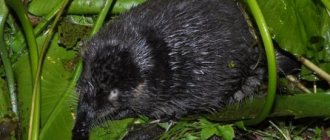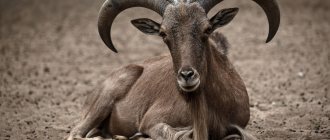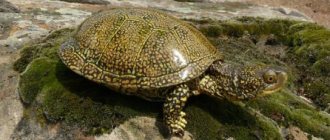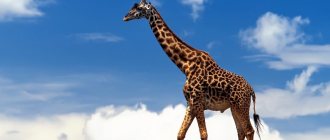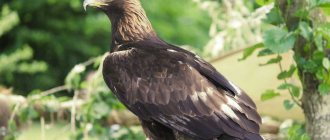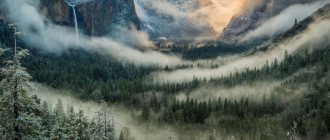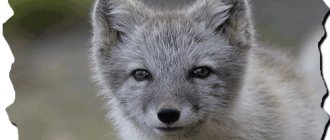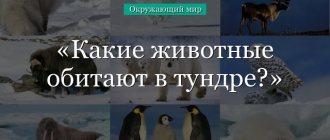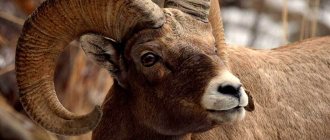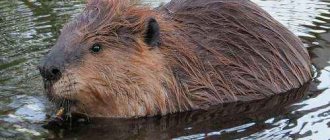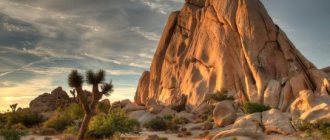What animals are found in the forest in the Moscow region?
The rich fauna of the Moscow region consists of representatives of all classes of animals: mammals, amphibians, reptiles, birds and fish.
Here live both traditional forest inhabitants (wolf, fox, bear, wild boar, hare), and animals less familiar to these places - raccoon dog, European and American mink.
Each region of the region is dominated by different species: brown bears, lynxes, wolves, foxes and other taiga animals prefer the northwest, while steppe animals such as hamsters and jerboas live in the drier lands of the south of the Moscow region.
Geographical position
The relief of the Moscow region is dominated by flat landscapes. However, in the western part there are small hills (more than 160 meters), and in the eastern part, on the contrary, there are vast lowlands.
The Moscow glaciation is observed on the territory of the region, the sediments of which form the Moscow moraine. A moraine is a geological body composed of glacial deposits, which is a heterogeneous mixture of giant blocks.
Among other types of relief in the Moscow region, it is necessary to mention the hill within the city of Dmitrov (about three hundred meters), as well as the Dubninskaya lowland (surface height less than 120 meters).
Mammals
Brown bear
This animal is now found quite rarely in the forests of the Moscow region. As an endangered species, the brown bear is listed in the Red Book. To live, bear families choose the most remote corners in the north of the region: dense forests with windbreaks.
A feature of bear families is their separate residence: the female lives separately from her husband, occupying, together with all the children, a small area that is significantly smaller in size than the vast territory of the head of the family. The main part of the diet is plant food: berries, nuts, stems and roots of plants. Sometimes the bear does not refuse rodents, frogs, fish and insects that he comes across.
Elk
A large, majestic animal with massive horns, whose weight sometimes reaches 600 kg, has extraordinary strength: with a blow of its hooves it can easily kill a bear. Despite their formidable appearance, moose eat only plants; they especially love succulent grass.
One of the moose’s favorite pastimes in the summer is standing for a long time in water up to their necks: this way they escape from the sweltering heat and annoying insects. The behavior of a moose when meeting people is difficult to predict: sometimes it behaves peacefully, but there are also cases of attack.
Red deer
This graceful animal is found mainly in deciduous forests with an abundance of meadows and dense bushes. Deer strictly monitor the inviolability of the boundaries of their possessions, mercilessly expelling any uninvited guest from there.
During the day they sleep in secluded places, and walk and feed at night and at dawn. The deer constantly has to be on the alert, wary of predators, so the animal has keen eyes and well-developed hearing.
Boar
Omnivorous artiodactyls live in deciduous and mixed forests, near water bodies. The boar's powerful body is covered with elastic dark bristles, and a formidable weapon protrudes from its mouth - powerful fangs.
Despite its terrifying appearance, a boar rarely attacks a person first, however, if you anger the animal, it instantly turns into a dangerous enemy.
The animal has a keen sense of smell: it is able to smell a smell while being at a distance of about 500 m from its source. Polygyny is in fashion among wild boars: a male can be surrounded by up to 5-6 females. This is not surprising: after all, according to the unwritten rules of the pack, only the strongest and healthiest individuals can continue the race. Therefore, the mating season is the time of the fiercest struggle for wild boars for the attention of the fair half.
Wolf
A large predator with long thick fur, intelligent and cunning, prefers to live in open places rather than in dense thickets. The structure of the coat, consisting of two layers (outer, tougher, and undercoat, which includes down, which warms the wolf) visually further increases the size of this animal.
The wolf is an excellent swimmer, easily covering distances of several tens of kilometers. Wolves live mainly in packs, each of which, in addition to the traditional leader, also has a main female.
Fox
The home of this beautiful predator with luxurious fur and a bushy tail can be found in a hole, cave and even hollow. The cunning fox loves to ambush rodents, birds and, of course, hares.
Acute hearing and excellent sense of smell allow her to track down even a mouse under a thick layer of snow. Foxes live alone, not gathering in packs.
Lynx
An intelligent and prudent predator from the cat family, listed in the Red Book, lives mainly in the most remote corners of large forests.
The animal can be easily recognized by its characteristic ear tufts. Thanks to its extraordinary agility, the lynx runs quickly, swims well, and easily climbs any trees.
Big jerboa
A rodent with strong hind legs and very long feet is capable of moving at tremendous speed (up to 40 km/h) and jumping up to 3 m, which is much greater than the size of the animal itself. The jerboa does not like to communicate even with relatives and leads a solitary and predominantly nocturnal lifestyle.
Its main food is plants and insects. The underground home of the jerboa is distinguished by a complex structure and a large number of tunnels. The animal spends the winter, being deep, at the very bottom of its hole.
Marten
The forest predator with a flexible, elongated body and short legs has a bushy tail, which helps it maintain balance while jumping from one tree to another.
The marten, which can deftly climb trees, “hunts” in hollows and bird nests, catching both eggs and chicks there. Squirrels and other small animals also become victims of the marten. The predator kills the caught animals with a bite to the back of the head.
Badger
The burrows of this animal, which are a safe refuge with numerous underground corridors and dozens of entrances, are located in ravines, gullies and steep river banks. Badgers' favorite food is toads, and they also eat plants.
In winter, the animal hibernates, but not too deeply: from time to time it comes out into the air to stretch its muscles. Although there are few badgers left in the forests of the Moscow region, unfortunately, hunting them is still legal in most natural areas.
Speckled gopher
This animal, listed in the Red Book of the Moscow Region, is now very rarely found in the Moscow region. The cute rodent is one of the smallest species of gophers.
The animal is distinguished by rare devotion: it usually chooses a mate for life. During the day, the animal walks and gets food (plants and insects), and at night it sleeps in its home, sitting on its hind legs.
Squirrel
The famous forest acrobat, who can jump from a 30-meter height without any damage to herself, has firmly established herself in the Moscow region. When jumping, the squirrel's bushy tail serves as a kind of rudder. The animals' diet is dominated by plant foods, but on occasion they also feast on insects and eggs of birds and snakes.
The main task of the animal before the onset of cold weather is to make a sufficiently large supply of food, because during the winter it eats about 3,000 nuts. Interesting fact: baby squirrels are born completely blind, but with fully formed and well-developed claws.
Hedgehog
The animal, almost all of whose body is covered with needles, is difficult to confuse with someone else. This coating reliably protects the hedgehog from various attacks on its integrity.
This animal is vulnerable only to the fox: the cheat throws a thorny ball into the water, where the hedgehog is forced to reveal itself. Hedgehogs' food consists mainly of insects. They feed especially intensively on the eve of hibernation: they accumulate fat in reserve in order to rest in comfort.
Rivers, lakes, swamps
A characteristic feature of the inland waters of the Moscow region is a dense river network, which includes more than two thousand rivers and streams. All of them carry their waters into the Volga basin. Although the great Russian river itself does not flow through the territory, its tributaries are located here - Oka, Lama, Dubna. Rivers are fed by precipitation. The Moscow region can be called a lake region, as there are more than 350 lakes on its territory. In the north of the region, the lakes are of glacial origin. They are relatively deep. The Meshchersky swamps are dominated by small lakes. The largest lake in the Moscow region is Lake Senezhskoye, which is in the Solnechnogorsk region. The deepest is Lake Glubokoe, its depth is 38 m. Particular attention should be paid to the swamps of the Moscow region. They occupy almost 5% of the total area of this large region. Most of them are peat bogs. Industrial peat deposits occupy about 200 thousand hectares, the peat layer in them reaches a thickness of 10-12 m.
Birds
Little bittern or top
A characteristic feature of this bird is laziness, which does not allow it to make long flights. This is why bittern nests can be found in thickets near bodies of standing water.
Representatives of this species of birds feed on frogs, tadpoles and small fish, and sometimes on the chicks of small birds. The onset of cold weather, however, still forces the bittern to move to warmer places. Long, dexterous fingers allow the bittern to easily climb through the densest thickets.
Peregrine Falcon
The predator of the falcon family with gray-black-white plumage and black “whiskers” is distinguished by its ability to develop a speed that is enormous for birds - about 90 m/s.
The peregrine falcon eats smaller birds and forest animals. Having tracked down the prey, the peregrine falcon attacks it with all its might with a blow of its powerful beak, sometimes cutting off its head in the process.
Landrail
The nests of this migratory bird can be found in meadows, sown arable lands and near swamps - wherever there are thickets of tall grass.
The corncrake leaves its shelter very rarely, preferring a solitary lifestyle. The bird feeds on insects and mollusks, and sometimes on frogs and even small mammals.
Bullfinch
In the coniferous and mixed forests of the Moscow region you can often find a small bird with bright plumage.
Bullfinches are sedentary birds and remain in their native places for the winter. They eat mainly berries, seeds and plant buds.
Soil diversity
On the territory of the Moscow region, there are mainly three types of soils - podzolic, sod-podzolic, gray forest and chernozem. The richest black soils are typical only for the southernmost regions of the region. The humus content in them is low, only 5-6%, while Voronezh chernozem contains up to 8-9%. Most often, chernozems near Moscow are leached or podzolized. This is explained by the relatively large amount of precipitation falling in this area. In the northern and eastern parts of the Moscow region there are poor podzolic soils. They are poor in humus and therefore infertile. They develop mainly under coniferous forests. Typical soils for the Moscow region are soddy-podzolic. They are characterized by high acidity, so for use in agriculture, sod-podzols must be limed. In the southwestern part of the region there are transitional soils - forest sierozems. The proportion of humus in them reaches 3%, so they are considered fertile. There are swampy and swampy soils in the region. Mainly confined to the northern and eastern parts, as well as to the Meshchera Lowland. The low fertility of these soils is explained by their poor mineral composition, high moisture content and lack of air in them. If drained, these types of soil can become fertile and can be used for cultivating crops.
Reptiles
Viper
The teeth of this small reptile with a flat triangular head, which terrifies the inhabitants of the forests, are so long that they have to be folded to fit into the mouth. To make it easier for the viper to catch prey, it camouflages its color to match the primary colors of the surrounding area.
Having attacked a victim (rodent, bird or toad), the snake inflicts a fatal injection on it and, after the poison takes effect, swallows the food. For humans, a viper bite is not fatal, but can cause swelling of the affected arm or leg, fever and vomiting. In such cases, you should seek help from a doctor.
Already
These snakes can often be found near forest ponds: they are excellent swimmers. It's not dangerous for humans.
To defend itself from attack, it secretes a liquid with a pungent unpleasant odor, which completely suppresses the appetite of predators.
Lizard
The reptile has an elongated body, covered with horny scales, and unusually dexterous fingers, allowing it to quickly and deftly climb tree trunks. Lizards have excellent hearing and a keen sense of smell.
Despite its good eyesight, the reptile hunts only for moving objects. Favorite delicacies of lizards are insects, snails and earthworms.
Spindle is brittle
This animal is a type of lizard, but differs in that it does not have legs. Externally, the spindle resembles a snake, but only with external ear openings and movable eyelids.
Primary colors are gray and brown with a metallic tint. Males have dark or blue spots on their back.
Elk
A large animal, growing up to 2.3 m in height and 3 m in length. Body weight often exceeds 500 kg. Although the elk belongs to the deer family, in appearance it is very different from its relatives. It has a dense body, a short neck, a large, hook-nosed head, long legs and huge, spade-shaped horns (in males), the span of which reaches 1.8 m. The elk lives in the forest zone, feeds on herbaceous plants, branches and leaves of trees and shrubs, also consumes mosses, lichens and mushrooms.
Amphibians
Toad
This inhabitant of the forests near Moscow prefers to lead a terrestrial lifestyle, descending into the water only occasionally to spawn. It feeds on worms and other terrestrial invertebrates.
The toad itself is not afraid of predators: its skin glands produce reliable protection - poisonous juice. Once in the attacker's mouth, it instantly causes a strong burning sensation and vomiting, after which the toad is immediately free.
Frog
The small animal can always be seen in the forest in warm weather. Without hiding from anyone, the frogs bask in the sun, not forgetting to stick out their sticky tongue at the right moment to catch and eat the unwary insect.
In the evenings, the frog choir delights passing listeners with its loud “concerts”. These amphibians usually spend the winter at the bottom of reservoirs.
Grouse
A resident bird of the pheasant family. Smaller in size than other representatives of the grouse subfamily, it grows no more than 37 in length. The wingspan reaches 54 cm, weight usually does not exceed 500 g. The body of the hazel grouse is plump, the head is small, and the beak is short. The plumage is variegated: there are red, brown, black and white colors. A bright red semicircle is clearly visible above the eye. The bird lives in the thicket of the forest, in summer it stays on the ground, in winter it moves to trees. It feeds mainly on plant foods.
Fish
Pike
One of the most common and famous inhabitants of the Moscow region. The long-lived fish (some individuals live more than 30 years), which looks like a torpedo, with its huge mouth full of sharp teeth, swallows large quantities of roach, perch and other neighbors in the reservoir.
Tench
The body of this fish is abundantly covered with mucus. Its color depends on the conditions of its habitat. There are tench of a greenish-silver color, and in reservoirs with a lot of silt - brown with a bronze tint.
Lin does not like light and close proximity to anyone. He leads a secretive and sedentary lifestyle in the depths. The tench’s favorite pastime is to hide among underwater thickets and watch for prey there: worms and mollusks.
Bream
The fish, which can reach a height of one third of its length, has a characteristic external feature: its mouth ends in a retractable tube. Breams prefer a collective lifestyle.
Groups of these fish live closer to the bottom of reservoirs, where there is a lot of vegetation.
Flora of the Moscow region
Most plant species in the Moscow region, due to the peculiarities of the natural conditions and soils of the region, do not grow in isolation, but form interconnected plant communities.
According to the nature of vegetation, the territory of the region is conventionally divided into several districts, each of which has its own characteristics. This is a forest-steppe stretched along the southern edge of the Moscow region, practically free of forests; swamps and pine forests that are located near the eastern border of the region; spruce forests bordering the northern border; as well as deciduous forests located slightly south of Moscow, near the border with Meshchera. Among the most common plants of the first tier, it is worth highlighting Norway spruce, Norway maple, English oak, common ash and linden. The second tier of vegetation in the Moscow region is represented by euonymus, hazel, viburnum, bird cherry and elderberry. The third tier of the region is occupied mainly by lingonberries, blueberries, mynika, sorrel, hoofed grass, lily of the valley, cereal plants, lungwort and many types of ferns. The latest, fourth tier of the flora of the Moscow region is represented by sphagnum, flax, various mosses and lichens.
Animals listed in the Red Book of the Moscow Region
Dense development and intensive construction of highways, accompanied by deforestation and parks, river pollution, an increase in the number of garbage dumps - all these factors negatively affect the number and diversity of animals in the Moscow region.
Due to the active construction of houses along the banks of reservoirs and illegal fishing, the number of otters is decreasing; moose and bears are suffering from the destruction of dense thickets - their traditional habitats.
The unfavorable environmental situation threatens the complete disappearance of rare species of animals that are listed in the Red Book of the Moscow Region. These include:
- European minks living near food-poor water bodies, which often find themselves in built-up areas;
- some taiga species of animals: brown bear, equal-toothed and tiny shrews, hazel dormouse, wolf, underground vole, yellow-throated mouse;
- bats (small and giant noctule, northern leatherback, nocturnal bats: Natterera, pond and mustachioed) - animals living in caves, adits and abandoned basements, the number of which is constantly decreasing;
- Russian muskrat;
- common flying squirrel;
- river otter;
- lynx;
- big jerboa;
- speckled gopher.
In addition to mammals, about 70 species of birds, 4 species of amphibians, 5 species of reptiles and 10 species of fish and over 240 species of insects are listed in the Red Book.
Until recently, the black stork was considered a completely extinct species, but in 2022, a pair of these rare birds was discovered in the Moscow region. Later they had their first chick.
Important! If you encounter a wild animal while walking in the forest, beware of close contact with it, even if it is considered harmless (for example, a hedgehog or a squirrel). Many infectious diseases, including rabies, can be transmitted through touch.
Despite the high population and active development, in the Moscow region there are still large areas of untouched forests, distinguished by a variety of animal life.
To preserve each species of animal, it is very important to pay the necessary attention to their protection and take good care of our natural wealth.
Despite the high population and active development, in the Moscow region there are still large areas of untouched forests, distinguished by a variety of animal life. To preserve each species of animal, it is very important to pay the necessary attention to their protection and take good care of our natural wealth.
Relief
The Moscow region is located in the center of the Russian Plain, so most of this territory has a leveled topography. The north of the region is occupied by the Smolensk-Moscow Upland, the average heights of which do not exceed 300 m. The relief here is hilly, indented by numerous valleys of streams and rivers. The east of the territory is occupied by the Meshcherskaya lowland, elevations range from 100 to 150 m. The territory of the lowland is swampy. The swamps are of glacial origin. They arose as a result of the melting of ancient glaciers. In addition to the fact that water rushed to low-lying areas and accumulated, sand deposits were formed here, which give the area a special slightly undulating topography. This type of relief is called outwash. Meshchera is occupied by peat bogs, which are characterized by a high level of fire danger. In the west, between the Moscow River and Oka River, is the Moskvoretsko-Oka Plain. It is characterized by a leveled gully-beam topography. Traces of landslide and karst processes are visible on the slopes of rivers, ravines and ravines. The extreme south is occupied by the Central Russian Upland, the slightly undulating relief of which does not exceed 230 m.
Mushrooms
Branched tinder fungus – Polyporus umbellatus (Pers.) Fr.
Curly Sparassis – Sparassis crispa (Wulf.) Fr.
Chestnut mothball – Gyroporus castaneus (Bull.) Quél.
Blue Gyroporus – Gyroporus сyanescens (Bull.) Quél.
Semi-white mushroom – Boletus impolitus Fr.
White aspen – Leccinum percandidum (Vassilk.) Watl.
Pink birch – Leccinum oxydabile (Sing.) Sing.
Spider web – Cortinarius venetus (Fr.) Fr.
Scaly webweed – Cortinarius pholideus (Fr.) Fr.
Purple web spider – Cortinarius violaceus (L.) Gray
Yellow marshweed – Cortinarius triumphans Fr.
Red russula – Russula
Turkish russula – Russula (Schaeff.) Fr
Swamp milkweed – Lactarius pergamenus (Sw.) Fr.
Coral blackberry – Hericium coralloides (Scop.) Pers.
Lady Bear
A bright butterfly with a wingspan of up to 55 mm. Its forewings are black and blue, with irregularly shaped white and yellowish spots. The hind wings may be red, orange or yellow with black transitional spots along the edges. The chest is black, with 2 longitudinal yellow stripes, the abdomen is red. A distinctive feature of this type of bear is the presence of a developed proboscis, with the help of which the butterfly drinks nectar.
Viviparous lizard
Representative of the genus of forest lizards. The length of its body, including the tail, reaches 18 cm. The color of the back and sides is brown, with dark veins, the abdomen is light, red-orange in males, greenish or yellowish in females. Lizards of this species feed on insects, earthworms and snails. They differ from other members of the true lizard family in being viviparous, but some southern populations lay eggs.
Pine marten
A medium-sized predatory animal with a body length of no more than 58 cm. The marten's body is elongated, its legs are short. The color is dark brown, with a round yellowish spot in the throat, the nose is dark. The coat is long and soft in winter, shorter and harsher in summer. The bushy and long tail, up to 11 inches (28 cm) long, helps the marten maintain balance when climbing and jumping in trees. The predator lives in the forest, and during rest it climbs into hollows and bird nests. It feeds on everything it comes across, not neglecting carrion, but prefers to hunt small mammals and birds.
Insects
Emperor's Watch – Anax imperator Leach
Green rocker – Aeschna viridis Eversm.
Reddish rocker – Aeschna isosceles (Műll.)
White-haired rocker – Brachythron pratense (Műll.)
Pine sawtail – Barbitistes constrictus Br.-W.
Eastern sawtail – Poecilimon intermedius (Fieb.)
Short-winged swordsman – Conocephalus dorsalis (Latr.)
Wingless filly – Podisma pedestris (L.)
Spotted spearfish – Myrmeleotettix maculatus (Thnb.)
Dark-winged filly – Stauroderus scalaris (F.-W.)
Crackling moth – Psophus stridulus (L.)
Blue-winged filly – Oedipoda coerulescens (L.)
Broad-winged rattle – Bryodema tuberculatum (F.)
Forest racehorse – Cicindela silvatica L.
Golden ground beetle – Carabus clathratus L.
Ophonus unclear – Ophonus stictus Steph.
Callistus lunatus (F.)
Spring dung beetle – Trypocopris vernalis (L.) [Geotrupes vernalis (L.)]
Latissimus swimmer – Dytiscus latissimus L.
Smooth bronzeweed – Protaetia aeruginosa (Drury)
Norway wasp – Dolichovespula norvegica (F.)
Swallowtail – Papilio machaon L.
Euphorbia cocoon moth – Malacosoma castrensis (L.)
